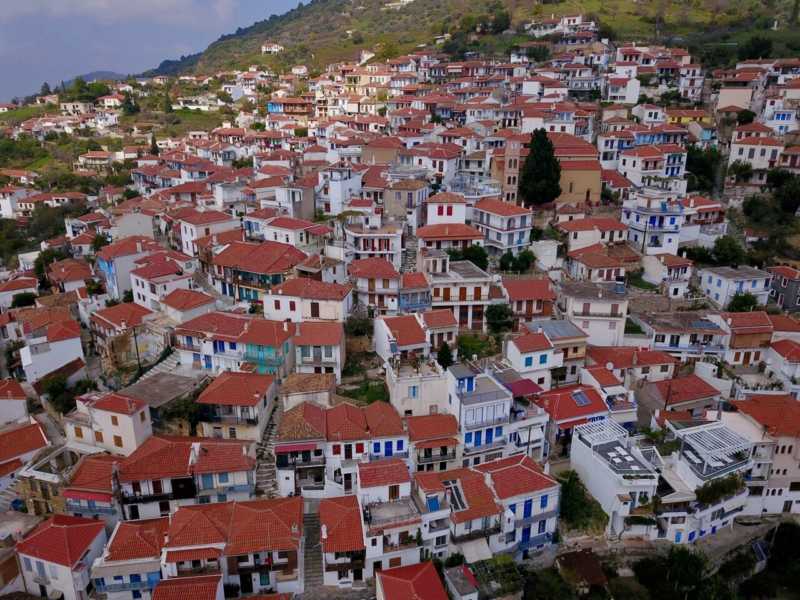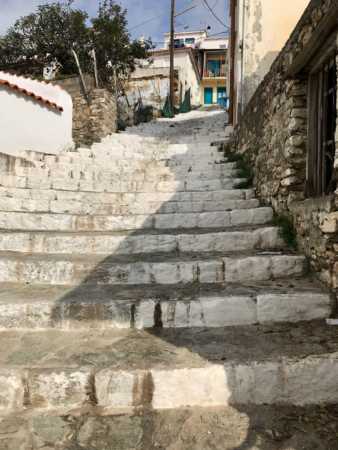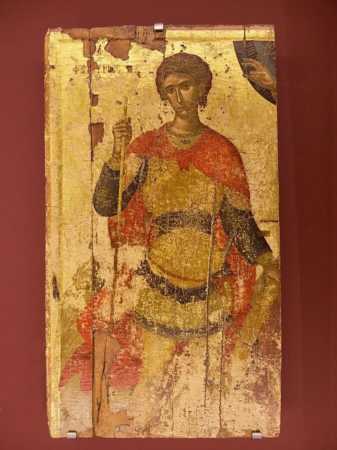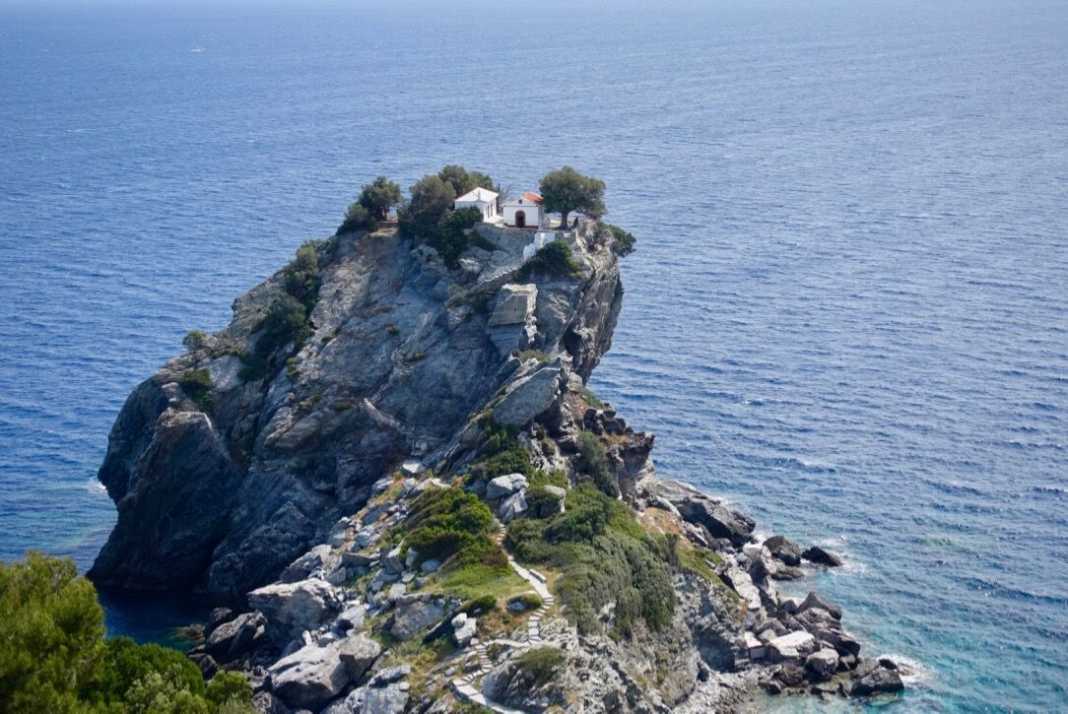By Karla Talleur, travel journalist and CEO of RoverTreks.com
When you travel the globe continually for 5 years without losing anything, it makes you wonder if you’re careful, lucky, or under the watchful eye of a miracle worker. This was on my mind as depression and panic set in when the diamond centerpiece was missing on my engagement ring during a recent trip to Greece.
My road to calamity began in our hotel at the port of Volos on an early mid-October morning. After dressing, I did what many women do. I put my jewelry on last to avoid snags with my clothing. A sparkle of sunlight arose from my diamond as I put on my ring.
Just getting around in Greece can be a rough-and-tumble experience easily triggering the loss of anything. Cities, towns and villages across the country present slippery, uneven sidewalks, steep steps and hills, and narrow cobblestone streets. Such was our departure from the hotel.
A Ferry Boat Ride
A short drive in a refrigerator-size rental car got us on the 7am ferry for the 3-hour transit to the island of Skopelos. We put the car in the slippery, solvent-laden industrial bay. We then walk up a ladderway to the passenger lounge.
The ferry lurches and bobs through the rough waters of the Aegean underway. My forearms pound intermittently against the railings as I try to snap photos.
After a quick stop on Skiathos, a 30-minute ride lands us at the port of Loutraki on the northwest end of Skopelos. Moviegoers will recall this place as the Mama Mia island.

The village of Glossa sits over the port of Loutraki from high above. Whitewash buildings with their signature terra-cotta red roofs speckle the steep, treacherous hillsides nestled among forests of emerald pine and white granite rock.
With a quick jaunt down a ladderway through the holds to our car, we drive off the ferry to unpack our suitcases at our studio apartment nearby.
The Land of Glossa
Getting around Skopelos is anything but easy. Narrow, twisty, sometimes rough, always shoulderless, striated, pothole-laden roads abound.
We thrust our little 1.2-liter front wheel drive rental car up through hairpin turn roads. With the pedal to the metal all the way the little car bounces from side to side jostling our shoulders against the doorframes as we barrel up former donkey trails that now serve as roads in Glossa. Inertia forward is the only way to make it up some hills in a car on islands like Skopelos.

We stop to visit a family whose home is set in a hilltop cliff overlooking Loutraki and the Aegean Sea. Our walk from the car to the entrance requires care and concentration. Every move is perilous. Sheer drop-offs are everywhere on these Greek volcanic islands. I slip, and my hands grab our car as I wire walk the 18” gap between the vehicle and the edge of the road.
Our reunion with friends is a joyous luncheon social. We sit in an open kitchen-dining-living area that feels smaller than it is because of the number of eclectic items that congest the area.
The room has a stove, sink, countertop, pantry, refrigerator, dining table with eight chairs, three large couches, chairs for another six persons, several coffee and end tables, a television on a stand, family memorabilia, and decorative homemade crochets including picture frames of doilies.
A Rough and Tough Walk After Lunch
No visit to a Greek island village is ever complete absent a walk to the town square for a cup of coffee. But as with all such jaunts in Greece, a walk means careful steps along rough, uneven, steep stone paths — much akin to the ancient Greek roads still on the surface around the country.
The comfort of a hearty meal fades as we tackle steps with 50-degree inclines in some places for several hundred yards to Monogramma-Monogramma, a small café perched near the top of Glossa. Coffee offers a welcome jolt to our lethargic post-luncheon bodies.

As the sun lowers over the Aegean, we descend with the late afternoon shadows down donkey-sized old stone roads to our car and then rewind our way down to our apartment at Loutraki on the sea.
My jewelry comes off first as I undress. As I look down, the pear-shaped solitaire diamond head of my engagement ring is gone.
My heart flutters as my mind flashes over our travels through the rough-and-tumble Greek land and seascape. Where do we look? Is it sensible to believe we could find it? Do we call the hotel on the mainland to ask for their help? Do we look through the bowels of the ferry the next time it is in port? Do we go back to Monogramma-Monogramma, retrace our steps through Glossa or ask our friends if we can search their home?
A Search With iPhones
My husband and I launch a meticulous search of our apartment on our hands and knees using our iPhones as flashlights. We look into the sink drain and around the shower. We feel through my clothes inch by inch. We move and look under and between the seats in the rental car. No joy.
My husband calls our friends to tell them about my loss. The 82-year old mother in the household tells him “she was wearing it when she came to the house because I noticed it glisten on her hand.”
It was our first sign of hope. We could restrict our search to Loutraki and Glossa.
The Call to Saint Fanourios
The next morning, we revisit our friends, and they introduce us to Saint Fanourios—the Greek Orthodox Saint of Miracles. Fanourios means “to reveal” or “to disclose.”
Orthodox Greek icons populate their home, including a particular area on the third floor. As we sit to talk they bring out an icon of Saint Fanourios and place it on the table in front of us. They regale us with stories about how this miracle worker came to the rescue in their lives when they had lost all hope. My loss was the subject of prayers by every member of the household.

For the next two days, we continue our fastidious backtracking through the streets, cafes, and shops in Loutraki and Glossa —all to no avail. My hope was waning.
At 6:30 on the third morning since my loss, my husband’s phone dings with a text message from our friends. Good news! They found my diamond!
A family member sat down on a couch after cleaning their house and saw a glisten under the TV in a distant corner of the room. It was my diamond, my miracle!
The likelihood of finding this small gem on this remote island of harsh, unforgiving topology given all of our movements was nothing less than miraculous.
As they return the diamond to me, they tell us of the Greek Orthodox practice to make a blessing to Saint Fanourios after a miracle.
A Blessing Is in Order
When a miracle occurs to a Greek Orthodox practitioner, it is common for the recipient to present an offering to Saint Fanourios and ask for a blessing by an Orthodox priest. Saint Fanourios Day is on August 27th of every year.
On the Sunday before August 27, 2019, we will meet with a priest at a Greek Orthodox church wherever we are and present him with a Fanaropita as an offering, tell him my story, and ask him for a blessing to Saint Fanourios.
A Fanaropita is a cake presenting accents of orange, cinnamon and olive oil flavors. After a blessing by the priest, I will share the cake with the poor or at least seven supplicants following the traditions of the Greek Orthodox church. When this happens, I am to tell the story of my miracle to all present.
A Recipe for All
If you are a miracle recipient care of Saint Fanourios, you’ll need to find a Greek bakery and order a Fanaropita. Or if one is not nearby, you can bake your own cake and take it to a Greek Orthodox priest on the Sunday before August 27th the year following your miracle. One recipe below is from seriouseats.com.
How To Make a Fanaropita
3-3/4 cup flour
3 tbs. baking powder
1 tsp. Cinnamon
1 tsp. Kosher salt
1 c. Sugar
¾ c. Olive oil
¾ c. Orange juice
1 tsp. Vanilla extract
Confectioner’s sugar
In a large bowl, mix flour, baking powder, cinnamon, salt, and sugar. Stir in olive oil, orange juice, and vanilla. The batter will be
very thick. Scrape batter into Bundt pan greased with olive oil and flour. Place in a preheated 350-degree oven. Halfway through the 45-minute bake time as the cake begins to set, wrap a coin in foil and insert it into the dough just below the surface.
Insert a tester into the middle of the cake to assure it comes out clean. The outside should be golden brown. Cool for 10 minutes and then remove to wire rack. Dust with confectioner’s sugar when serving.
Other recipes include a ¼ cup of Brandy, ¼ teaspoon of ground cloves, ½ cup of ground walnuts, and ½ cup of raisins.
Whatever ingredients you use, it’s important to follow tradition when you make your cake. Use an odd number of ingredients when you make your Fanaropita.
When You Need A Miracle Look to Saint Fanourios
Saint Fanourios is the great revealer. He helps those find what is lost whether it is physical or spiritual.
If you find yourself losing hope, consider a call to Saint Fanourios. A miracle just might be right around the corner for you.






